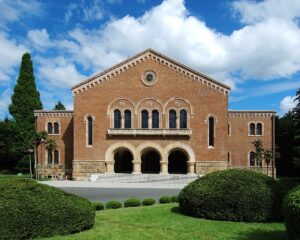Overview (history, characteristics, attractions)
Mount Hayachine is a mountain that straddles the cities of Hanamaki and Tono in Iwate Prefecture, with an elevation of approximately 1,917m. It is one of the most representative peaks in the Kitakami Mountains and has long been the subject of mountain worship. It is deeply connected to the legends and festivals associated with mountain worship (such as Hayachine Kagura), making it an important religious and cultural site.
In terms of nature, the mountain is rich in alpine vegetation, and is known as the "Mountain of Flowers" as a variety of alpine plants bloom in abundance from spring to summer. It is a popular spot for nature observation, especially as it is home to plants that are unique to the mountain and rare alpine plants. The view from the ridge is excellent, and on clear days you can enjoy views of the surrounding mountains and the Pacific Ocean.
Highlights
- Alpine plants: Many alpine plants, such as the Miyama-tanbai and Hakusan-ichige, bloom in the summer (July to August). There is a good chance you will encounter endemic species and species rare in the area.
- Ridgeline and views: The ridgeline near the summit offers a 360-degree view of the surrounding mountains and distant plains.
- Mountain worship and culture: Mountain-related traditions and festivals, such as Hayachine Kagura. The close connection between local culture and nature is what makes it so appealing.
- Autumn foliage: From late September to early October, the leaves change color and the entire mountain takes on a vibrant color.
Access (nearest station, transportation, etc.)
- Nearest major station
- Shin-Hanamaki Station (Tohoku Shinkansen) / Hanamaki Station (JR Tohoku Main Line): The base point for access from the Hanamaki area.
- Tono Station (Kamaishi Line): The base point for access from the Tono side.
- public transportation
- Seasonal mountain buses and local buses may operate, so be sure to check with the tourist information centers and operating companies in Hanamaki and Tono before setting off.
- When buses are not running, you can take a local bus and a taxi or a direct taxi, but there are fewer buses.
- Private car/rental car (recommended)
- It takes approximately 40 to 70 minutes from the center of Hanamaki City to the trailhead (depending on road conditions and the trailhead you choose).
- Parking spaces may be limited depending on the trailhead, so we recommend arriving early.
- others
- Taxi: You can take a taxi from Hanamaki or Tono, but the fare will be expensive depending on the distance. It is best to arrange in advance to have someone wait at the trailhead or pick you up.
Estimated stay (estimated time required)
- Day hike: Approx. 6-8 hours round trip (varies depending on the hiking route and your physical condition). Starting early in the morning is recommended.
- If you want to take your time observing and taking photos, we recommend at least 8 hours round trip, with one night's stay.
- If you combine mountain climbing with sightseeing in the surrounding area (visiting hot springs and tourist spots): Two days or more, one night is recommended.
Nearby spots
- Hanamaki Onsenkyo: A convenient place to relax in the hot springs before or after hiking. Also a great place to stay overnight.
- Miyazawa Kenji Memorial Museum (Hanamaki City): An exhibition facility related to local literary figure Miyazawa Kenji.
- Namari Onsen: There are traditional hot spring inns with a traditional feel, making it a popular place to stay after hiking.
- Tono (Folktale Village): A tourist spot that conveys folktales and traditional culture. If you have time, it's worth stopping by.
- Geibikei: A valley known for its boat rides (somewhat far away, so if you have time).
Things to be aware of (crowds, manners, seasonal precautions, etc.)
- Weather changes: Due to the high altitude, the weather can change suddenly. Cold weather gear and rain gear are essential. Snow may remain from spring to early summer, so snow mountain gear is required from winter to spring.
- Footwear and equipment: Please bring hiking boots, snacks, plenty of water, a map (or GPS), a headlamp, etc. There are sections where you will not have cell phone reception.
- Protecting endemic plants: Alpine plants are easily damaged by trampling or collection. Always stay on the trails and do not collect plants.
- Manners: If you come across a place or shrine associated with mountain worship, please pray quietly and be sure to take any trash home with you.
- Crowds: The number of climbers increases on weekends, consecutive holidays, and when the flowers are in full bloom. Be aware of traffic jams in the parking lot and on the hiking trails, as well as crowds at the summit. It's best to leave early in the morning to allow plenty of time.
- Submit a mountaineering notification and route confirmation: Check the route and required time in advance, and submit a mountaineering notification (either by post at the trailhead or online). In case of an emergency, let your family and accommodation know your plan.
- Preservation of flora, fauna, and cultural properties: Flying drones and any other actions that could damage cultural properties are prohibited in principle. Please follow local rules.
Lastly, Mt. Hayachine is a fascinating mountain where nature and culture blend together. It is especially spectacular during the alpine plant season and the autumn foliage season, but safety comes first, so be sure to check your equipment and the relevant information before heading out.



